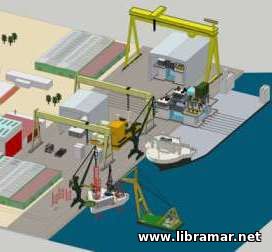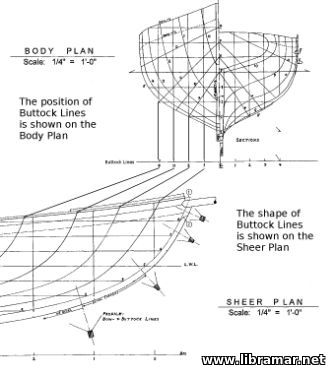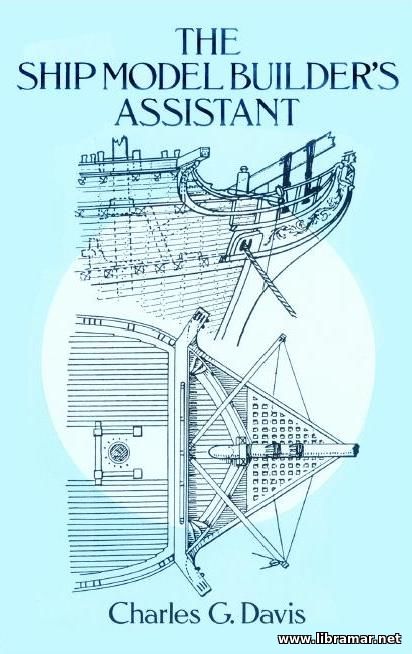Preliminary Planning in Shipbuilding

Preliminary planning is done at the time of bidding and before contract signing. The first step is to determine dates for such key events as keel laying, launching, and delivery. Due to uncertainties of the final design, the material market, and the general labor situation, it may be desirable to modify these dates in order to provide a margin of time in meeting definite commitments. This is a management prerogative.
Key dates are usually shown on a shipway schedule chart; these dates become increasingly critical when the number of shipways is decreased. Estimating the shipway schedule for new designs is difficult, especially if development work is necessary of if new facilities are required. Experience is extremely valuable in this connection because there is seldom time for any in-depth analysis.
For any efficient operation, whether the plans are prepared in the shipyard or by a subcontractor, the engineers and draftsmen must work closely with the building yard. The only way to minimize potential problem areas and to ensure a maximum degree of success is to consider each step in the construction and scheduling process, no matter how trivial the step may appear. This applies to machinery installation and outfitting as well. It is imperative that a design engineer be familiar with all of the pertinent factors affecting production, such as maximum size and weight of plates, sub-assemblies. and erection units. But most important is the time and effort needed to plan construction at the very beginning of the design stage.
In order to provide some flexibility in design and construction, specifications are often written to give the contractor reasonable options, such as to use a casting, a forging, or a weldment for a stern frame or to use either radiography or ultrasonic testing for weld inspection. In other cases, the specification will describe the construction method or system preferred by the contractor.
a. Purchase of Working Plans
When a series of ships is built in different shipyards, one yard usually has the option of purchasing working plans from the other, with no obligation on either party. However, it is difficult for one yard to build efficiently a ship to another yard's plans because of the physical constraints peculiar to each yard. Normally, there are enough differences in desired fabrication and erection procedures to require more than just a small amount of plan revision, and allowances must be made for this contingency. The same may be said when working to plans prepared by a design agent unless the design agent has worked closely with the building yard. At best, the results are not likely to be very satisfactory.
must be made for this contingency. The same may be said when working to plans prepared by a design agent unless the design agent has worked closely with the building yard. At best, the results are not likely to be very satisfactory.
b. Purchase of Outfitting and Machinery
Outfitting and machinery items may be purchased in several ways. First, some of the more standard items such as rigging fittings, valves, fans, and pumps can be bought off-the-shelf. Second, the more complex items such as boilers, steering gears, main propulsion machinery, and loading instruments require a technical specification to be prepared by the engineering department. For example, a steering gear specification would include hydrodynamic rudder torques for ahead and astern, maximum rudder angle, rudder rate, maximum ram pressure, and rudder stock size. The specification would be sent to vendors for quotations. Third, certain items may be prepared and installed by outside contractors. Such items are joiner work, floor covering, and insulation work.
c. Owner Furnished Equipment
The owner will usually wish to furnish certain items such as radio and navigational equipment, washing machines and dryers, mattresses and linens, galley equipment and dishes, and many of the spare parts. In naval vessels, essentially all of the weaponry and detection equipment is government furnished. In some instances, the government furnished equipment has been under development at the time of contract signing, and this made planning and scheduling more difficult.
d. Special Facilities
Shipyards have been called upon to construct unusual types of ships such as LNG carriers and semi-submersible drilling rigs. In some instances completely new facilities had to be built. Notable among these new facilities are those required for the construction and handling of the large tanks and spheres for some of the LNG carriers. The 850-ton spheres for one ship design had to be moved out of the construction site by a specially designed transporter to a barge, built specifically for the job, and then transported 900 miles to the shipyard where a new 1200-ton crane had been installed to handle the spheres.
In addition to new facilities, new methods for constructing and installing unusual structures and equipment may have to be developed, such as for nuclear powered ships or for various LNG containment and insulation systems. Some new methods may require rigid temperature and humidity controls. Intensive training and control programs are usually required when integrating these new methods with normal shipyard practices.
The "Read Later" function allows you to add material to this block with just one click. Just click on the icon and read the articles that interest you at any convenient time.


